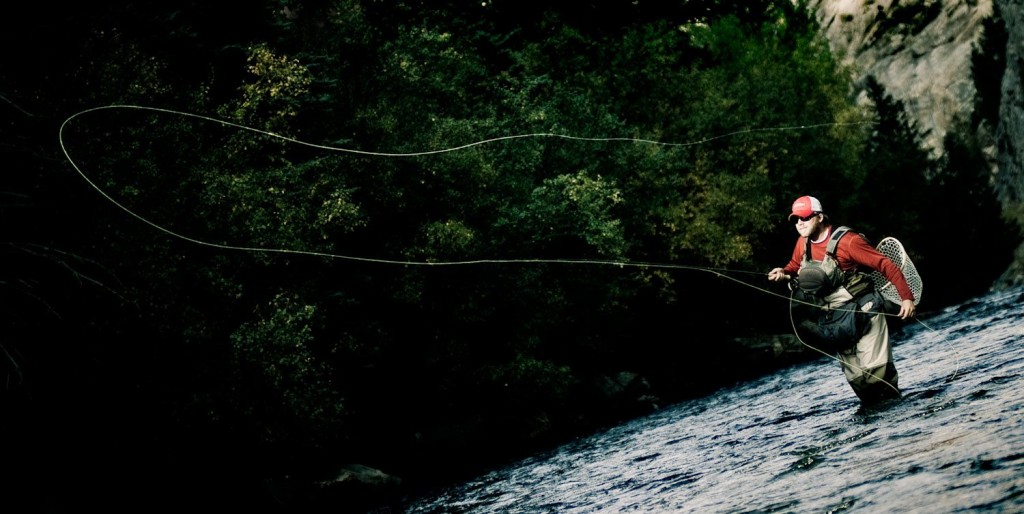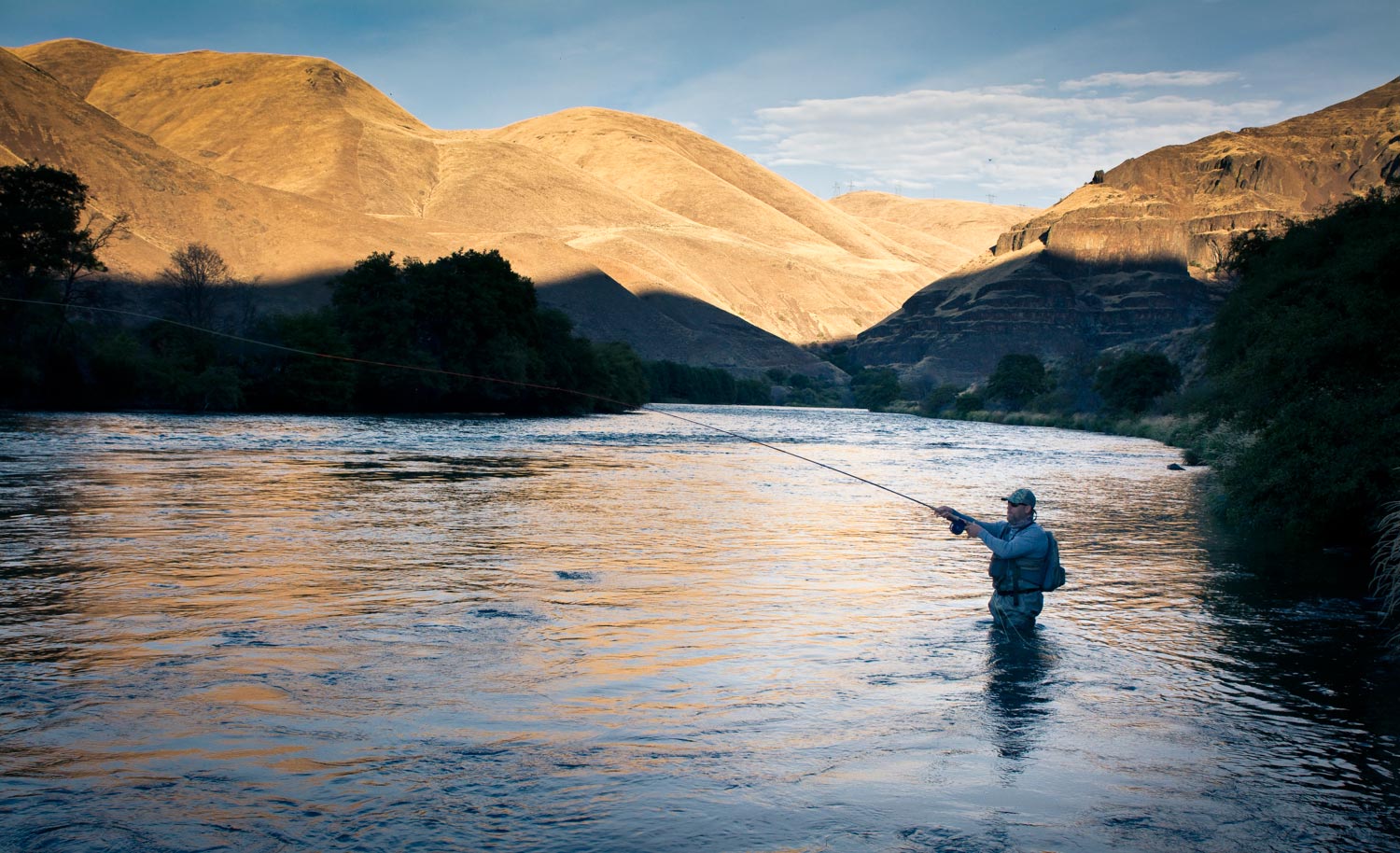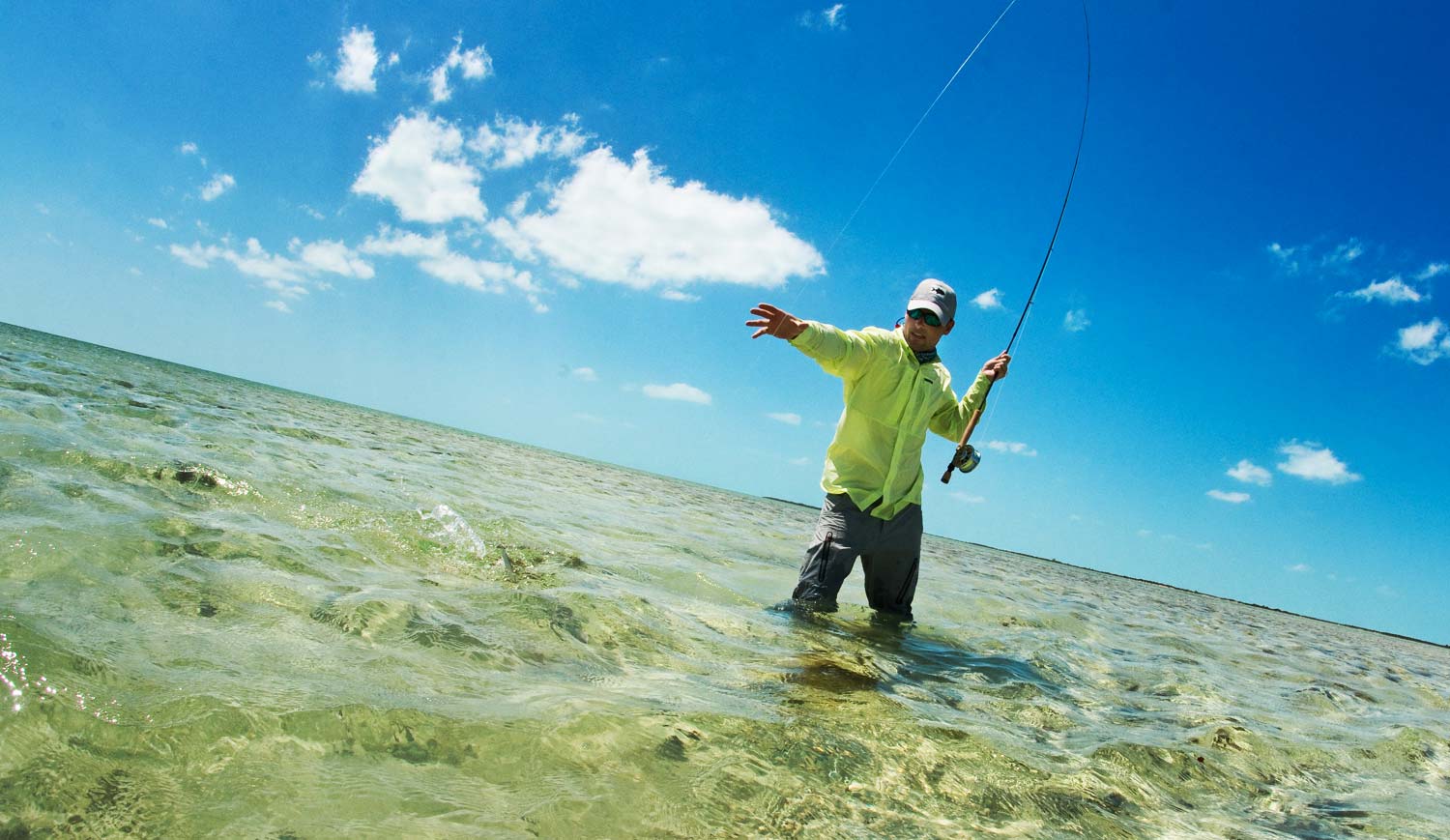Bugs, Bugs Everywhere, And Not A Fish To Be Seen

HAVE YOU EVER THROWN A PARTY, SENT OUT THE INVITATIONS, BOUGHT THE ONION DIP, AND IN THE END IT’S JUST YOU AND YOUR ONION DIP?
Now imagine the river is the party, the bugs are the onion dip, and the trout are your ungrateful, good for nothing, no-show friends. If you spend enough time on rivers, you have either seen or will see a situation where the hatch is out in force, yet not a single one of our finned friends is so much as poking a nose up to say hello. It is usually at this point your buddy starts with his blubbering about, “This is crazy man, all these bugs and not fish…I just can’t believe it dude…trout are cruel mistresses…I hate you Dad, ” and other such nonsense. My advice is
Read More »Slowing Down and Casting Easier Can Improve Your Fly Cast

Slowing down and backing off the power will help out your fly cast.
Read the title of this post and try to live by it.It’s my attempt in “one sentence”, to help fly anglers quickly improve their fly casting, and it’s made me twice fly caster and fisherman I am today. There’s lots more to fly casting than slowing down and casting easier, but if anglers focus on doing both together, they often will find that it can greatly improve their overall technique and control. Ask any professional sports athlete how they maximize their performance and potential, and almost all will reply with excellent technique. It’s no different in fly casting. If you want your fly casting to reach its full potential, you have to first build a strong foundation of fly casting mechanics and principles that you can consistently live by on the water. I’ve found personally that when I take the time to slow down and cast the fly rod with less power, it’s much easier for me to focus on the most important element of my fly casting, my technique.
Let your fly rod do the work
I’ve noticed a great deal of fly fisherman over the years cast with a tempo that’s too fast (rushing their cast), and they also often apply far too much power during their casting stroke. The majority of fly anglers that fall into this category are usually intermediate fly casters. They’re generally skilled enough to fish multiple types of rigs and cast their flies close enough to their targets to catch fish, but they’re approach has them expending far too much energy in the process. Furthermore, this style of casting usually yields a casting stroke that is slightly out of control, creates loops that are inefficient (sloppy) and presentations generally suffer. Put all these negatives together and you’ve got a fly rod that’s not able to perform its job effectively. Remember to always let the fly rod do the work, don’t try to be the power house. It will only work against you in the long run.
Why slowing down and backing off the power will help your fly cast out
First, by slowing down and watching your forward and back cast, you’re going to improve your timing and eliminate the creation of slack, because you’ll be matching the pause length correctly to the amount of fly line your casting. Second, by decreasing your power and casting easier, you’ll find it easier to smoothly accelerate your fly rod through your casting stroke, and keep it traveling in a straight line path throughout the cast. And because you’re
Is Your Steelhead Fly fishing Or Just Swinging?

By Louis Cahill
IS YOUR FLY FISHING FOR THE ENTIRE SWING?
Many anglers who successfully swing flies for steelhead could be catching even more fish by improving their swing. Steelheading is all about taking advantage of every opportunity and it’s pretty common for anglers to waste as much as half their fishing time with a poorly swung fly. I include myself among them. It’s technical business and requires constant attention.
The key to a good swing is keeping the fly moving at just the right speed and angle. That buttery slow swing that gives the fish time to see the fly and react. The gentle motion that entices the attack. It’s a hard thing to visualize and even harder to describe. Fortunately there’s a reliable visual cue that will help you determine when you fly is swinging well and when it isn’t. The belly of your line.
Before we talk about what the belly of the line tells you, let get some terms straight.
The belly is the part of the line which is swept by the current causing an arch in the path of the line. When swinging flies the belly determines the speed at which the fly moves across the current.
Picture yourself fishing from river left. You cast directly across a swift current, which flows from your left to right. Your line bellies down stream so that the middle of your line is down stream of your fly. We will call this a convex belly.
Now, picture yourself on the same side of the river but casting across a slow moving current with your fly landing in faster current on the far side. Your fly moves down stream and hangs below your line, which curves to follow. We will call this a concave belly.
Picture a swing where your line makes the shape of an L. Your fly and leader point in a direction perpendicular to your rod. We will call this a 90% belly. A 45% belly would have less curve in the line and a 100% belly would have more. A straight line swing or 0% belly would have no curve in the line.
When the fly is swinging at a good pace and angle, we will say it’s fishing. Not fishing means the speed and angle are wrong.
Now that we have our terms, what’s the swing we are looking for?
Read More »Fly Fishing Provides Great Health Benefits

I tell my clients, all the time, that I’m grateful for all the benefits fly fishing provides anglers.
It provides us with one of the funnest ways to exercise, and it has the ability to completely wash away the stress of everyday life, from its therapeutic entertainment. We really should be thankful that this passion of ours provides us with so much more than just the reward of catching fish. Each and everyday we fly fish, we should take a minute to sit back and reflect on this fact. What other exercise activity can you think of that allows you to burn tons of calories during the day, and not have the faintest clue your even working out? Most of us aren’t extreme athletes, and even if we were back in the day, many of us have gotten older and are no longer. The great thing about fly fishing is you can tailor it to your own abilities and needs. It’s a great activity for maintaining your long term balance, dexterity and muscle strength, and it does a very good job of keeping your brain sharp.
I really think we could boost the growth of the fly fishing industry if more people were writing about all the great health benefits it provides, both mentally and physically? I’d love to see Yahoo, or one of those other giant headline news websites (that most of us visit daily) post on its home page, a fly fishing picture with the headline, “Lose 15 pounds and have a blast doing it.” We need to start thinking outside the box to promote and attract newcomers to fly fishing, and I think this could be one area most of us have been overlooking.
Tie An Effective Fly-Fishing Leader for Bonefish

By Louis Cahill
This fly-fishing leader will out perform anything you can buy.
I have used this leader for most of my saltwater fishing for fifteen years. I learned it from my buddy Bruce Chard and have changed it very little in all that time. It offers the angler more control over their presentation than any commercially made leader. The leader has amazing turnover, especially in windy conditions, and also works well for other species like permit and redfish.
WATCH THE VIDEO AND LEARN TO TIE AN EFFECTIVE BONEFISH LEADER.
Read More »3 Tips for Swinging Flies for Trout & Other Species

A couple weeks back, for one of my Saturday Shoutouts, I showcased a great fly fishing article on MidCurrent titled, Beyond the Swing by John Likakis.
It was a fly fishing techniques piece packed with tons of information about the how-tos of swinging flies. It’s a great read for any angler wanting to become more competent and effective at swinging flies for trout and other species. If you happened to miss reading this one, please check it out after today’s post. After I read John’s article, it inspired me to share three swinging fly tips of my own. Each tip is meant to help the anglers out there who’ve just recently started swinging flies on the water.
Read More »6 Tips For Catching Spooky Bonefish

BONEFISH CAN GET SPOOKY. CRAZY, UNREAL, MADDENINGLY SPOOKY.
I found myself dealing with just this situation the other day. Wading for super spooky bonefish in skinny water. Not the easiest day of fishing to be sure, but I did pretty well. I thought I’d share some of the tactics that I use to bring spooky bonefish to hand. Some are obvious and some, not so much.
Wade quiet, or not at all
Bonefish are very sensitive to sound. Especially the sound of your legs pushing water. On days when the wind is still and the water calm, you can barely move without alerting them. Take special care that your steps do not push water. Go super slow! Be aware of pot holes and soft mud that may throw you off balance and cause sudden movements. Find ambush spots like inlets and points and just hang out for a while. Let the fish come to you.
Use light flies
Bonefish are extra spooky in skinny water. You don’t need a heavy fly when the water is shallow so switch to a lighter fly that will land softer on the water. Use bead chain eyes instead of lead eyes, and for extra quiet presentations wrap some hackle at the eyes to cushion their landing.
Keep a low profile
When bonefish are close, crouch or kneel to minimize your visibility. Wear soft natural colors that blend with the surroundings. This is crucial when fish are following your fly and swimming straight for you.
Lead ’em farther
If fish are blowing up on good presentations, or even before the fly hits the water, it’s time to lengthen your lead. The other day I
The Karma of Broken Trailers

Today we are proud to share an excerpt from Chris Santella’s new book, “The Tug Is The Drug.” You may know Chris as the author of “Fifty Places To Fly Fish Before You Die.” His new book is a collection of thirty essays. We know you will enjoy this one!
THE KARMA OF BROKEN TRAILERS BY CHRIS SANTELLA
Every generation or so, the subject of paving the Deschutes River access road from Sherars Falls to Mack’s Canyon is brought up for discussion. The notion is always quickly shot down, with the guide community leading the charge. “The crowds will be unbearable on an already crowded river,” is the sentiment. Prospects for a paved road are tabled for another 10 or 20 years, and some of its opponents proceed to drive the roughly 17-mile stretch at twice the posted speed limit—especially during the steelhead season—leaving the already marginal gravel road a washboard hell.
One that can be very hard on trailers.
I own a one-third share of a drift boat, and consequently am sometimes asked to donate a trip for a school auction or assist friends with overflow guests. One weekend last September, I was slated for two such trips, back-to-back, both floating from the Beavertail campground to Mack’s. Prior to the adventure, I had my tires rotated and checked, knowing the travails that waited. I picked up the boat from my friend’s driveway and proceeded to Maupin.
At 4:30 the next morning, my friend (and his sturdy Tacoma Supercab) began the drive north to Beavertail. When we left the paved road at Sherars, my Subaru was engulfed in his dust; but soon his taillights were out of sight. That’s because I drive very slow on the access road, hoping to get my rig down and back in one piece. There was a blush of pink above the rimrock as I descended from the road to Beavertail. Reaching the bottom, I could see my friends at the put-in, wadered up and waiting. I circled the campground and rounded the final bend to approach the put-in. As my wheels straightened, there was an abrupt thud. I stopped, expecting I’d hung up on a rogue rock or popped one of my recently rotated tires. My eyes drifted to my passenger-side mirror. There, I spied one of my trailer tires rolling toward some brush.
Fixing Line Twist: Video

A day floating the river can turn into frustration when your running line starts to tangle.
There are lots of reasons fly lines get twisted. The most common is being rolled under foot in the bottom of the boat. However it happens, it’s a mess of tangles and knots that make fishing frustrating. There’s nothing worse than landing your fly just short of the strike zone because your running line is tangled.
Fortunately there is a simple trick to fix line twist. I learned this trick from my buddy Zack Dalton of ROI Products and it changed my life. I promise you will love it.
WATCH THE VIDEO AND NEVER SUFFER WITH A TWISTED LINE AGAIN.
Read More »Flynn’s Stonefly Nymph: Video

I HAVE SAID ON MANY OCCASIONS THAT, I DON’T CARE TO LIVE IN A WORLD WHERE TROUT DON’T EAT STONEFLIES.
My good friend Dan Flynn shares my obsession with the noblest of insects. Dan is a great tyer with an impressive repertoire of classic patterns. I have always admired his meticulous stonefly nymphs. I’ve also spent many days watching him crush trout on them.
